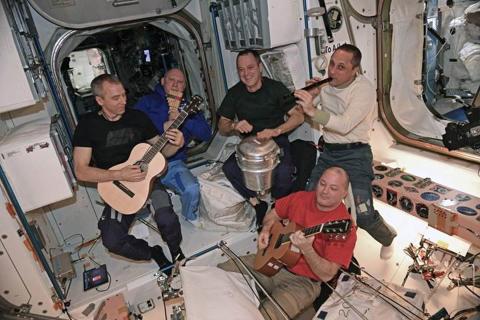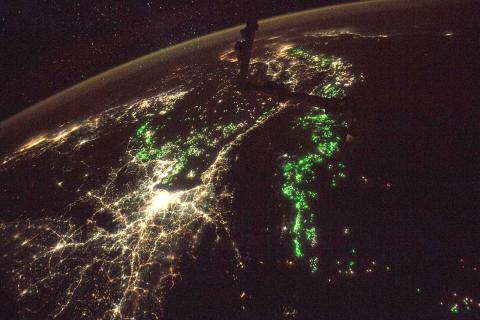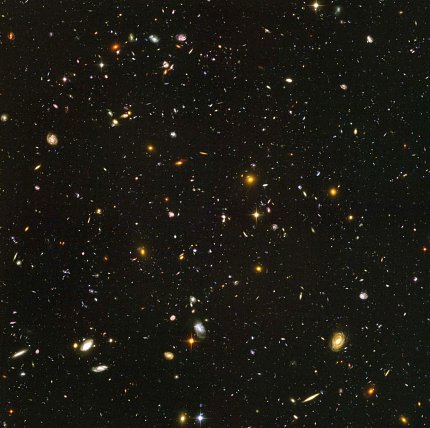NIAMS Intramural Staff Experience Life in Space—Virtually

Photo: NASA
On May 30, 2020, for the first time in nearly a decade, NASA astronauts blasted into space in an American-made rocket launched from U.S. soil. Former astronaut Marsha Ivins knows just what they experienced—the jolt of accelerating to 17,500 m.p.h. in under 10 minutes, then floating, weightless, more than 250 miles above.

Photo: NASA
A veteran of five spaceflights and now an independent engineering consultant, Ivins logged more than 1,300 hours in space. She presented a keynote address recently at the annual retreat for the NIAMS Intramural Research Program.
In her talk, titled “A Short Story of Human Spaceflight,” Ivins captivated her Webex audience with a speedy run-through of NASA highlights. She began with the 1961 flight of Alan Shepard (the first American in space), then described progress made by the Mercury, Gemini and Apollo missions, along with personal anecdotes and historic footage. The narrative culminated with photos of the International Space Station (ISS) and its current crew—three NASA astronauts and two Russian cosmonauts—including the two Americans who had arrived via their SpaceX vehicle just days earlier.
Ivins spent much of her talk focusing on the exhilaration—and weirdness—of weightlessness.
“It’s so much fun [and] it’s so hard to get [the] hang of,” she said. “It’s so crazy to go places headfirst, go down a ladder headfirst, look at people upside down. I never got tired of that.”
Photos and videos of herself and others aboard the ISS visually reinforced her words and provided intimate insight into the daily lives of space travelers. For example, without gravity, water doesn’t flow. Instead, it forms flexible balls. To bathe, astronauts smear one body part at a time with baseball-sized blobs of water, then add liquid soap. Human waste is handled based on its form. Solid waste is sealed in plastic. Liquid waste is recycled into drinking water (“making tomorrow’s coffee out of today’s coffee”).

Photo: NASA
Those aboard the ISS follow a rigorous schedule that includes maintaining the space station; running experiments in botany, biology, human physiology and engineering; and exercising 2 hours a day to ward off the loss of muscle and bone mass (of particular interest to the NIAMS audience). But they also have a bit of time to relax. Popular entertainment options include watching movies on a wide-screen TV, or jamming with acoustic guitars, pipes and a clean, never-used solid waste can repurposed into a drum.
Ivins showed a photo of an area of the station called the cupola. With its wrap-around windows, the cupola is a favorite spot for taking selfies and “watching the world go by,” she said. “We go around the Earth every 90 minutes. For 45 minutes we see daylight and for 45 minutes we see night…So, 16 times a day we see the sun rise and 16 times a day we see the sun set.”

Photo: NASA
Ivins’s talk included a kaleidoscopic tour of Earth from above, featuring more than 150 photos taken by orbiting astronauts. Some images highlighted the many colors of our home—the turquoise waters of the Caribbean, the red soil of Australia’s outback, the curving green glow of our atmosphere. Others featured familiar cities or recognizable land masses, such as Italy’s boot or Florida’s sock. The last few photos revealed the impact of humans—smog above Beijing, residue outlining the BP oil spill, a squiggly red line marking the artificially illuminated boundary between India and Pakistan.
Questions after the talk featured insatiable curiosity about life on the space station, including:
- How do you wash your clothes? (You don’t—you wear them until they are “loosely connected clothing molecules,” and then throw them away or use them like bubble wrap to protect hardware and experiments returning to Earth.)
- People sweat when they exercise, and you store human waste for months. Does it stink up there? (Not too bad.)
- When will we land on Mars? (Likely not before 2030.)

Photo: NASA
A question that elicited one of the most interesting answers came from the 8-year-old son of a NIAMS investigator: “Where does the oxygen come from?” The answer: In part, from wastewater. Liquid waste can be either recycled or put into a Russian device that breaks it into oxygen and hydrogen. The oxygen is released into the cabin and the hydrogen is “thrown overboard.” The Russians also have a candle-like device that releases oxygen when it burns. Resupply crafts bring tanks of nitrogen, which is combined with oxygen to create a breathable mixture.
Ivins ended her talk by reminding Earth-dwellers of the vastness of space. She described a simple exercise that drove the lesson home: On a clear night, go outside and raise a thumb at the sky, holding it out at arm’s length.
“This is a portion of sky that would be obscured by your thumb,” she said, displaying a black expanse shot through with pinpricks of white and gold. “Each point of light in this picture is not a star,” she said. “Each point of light is a galaxy. Wrap your brain around that.”
